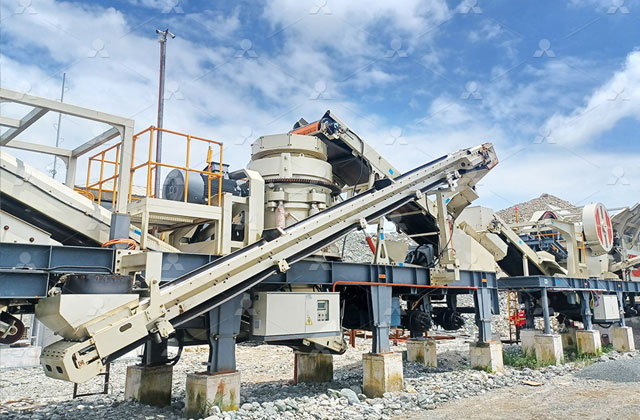Using a mobile cone crusher involves several key steps to ensure effective and efficient operation. Here’s a comprehensive guide on how to use one:
1. Understanding the Equipment
A mobile cone crusher is designed to crush rocks and ores by compressing them between a moving cone and a fixed cone. It’s ideal for secondary and tertiary crushing stages, producing finer aggregate for various applications. Mobile versions combine a cone crusher with a crawler or wheeled chassis, allowing for easy mobility and transportation on-site.
2. Preparation
- Site Preparation: Ensure the site where the crusher will be used is properly prepared. The ground should be level and stable to support the machine and prevent movement during operation.
- Inspection: Before starting, conduct a thorough inspection of the equipment. Check for any signs of wear or damage, and ensure all components are in good working order. Verify that the hydraulic system, electrical connections, and conveyor belts are functioning properly.

3. Setup
- Positioning: Place the mobile cone crusher in a suitable location for easy access to the feed material and to facilitate efficient material handling. Ensure there is adequate space around the machine for maintenance and operation.
- Leveling: Level the crusher to ensure proper operation. Use the leveling jacks to stabilize the unit and prevent vibrations that could affect performance and safety.
4. Operation
- Start-Up Procedure: Follow the manufacturer’s start-up procedure, which typically involves powering up the hydraulic system, starting the engine, and activating the crusher’s various systems.
- Feeding Material: Feed material into the crusher’s hopper gradually. Avoid overloading, as this can cause blockages and affect the quality of the crushed product. Use an appropriate loader or conveyor system to feed the material evenly.
- Adjustments: Adjust the settings on the cone crusher to achieve the desired size of the crushed material. This may involve changing the closed-side setting (CSS) or adjusting the feed rate.
5. Monitoring
- Regular Checks: Continuously monitor the crusher’s performance during operation. Pay attention to indicators such as the engine temperature, hydraulic pressure, and feed levels.
- Maintenance: Perform regular maintenance checks as outlined in the manufacturer’s guidelines. This includes checking and replacing wear parts, lubricating components, and ensuring the crusher remains clean and free of debris.
6. Safety
- Personal Protective Equipment (PPE): Ensure that all operators and maintenance personnel wear appropriate PPE, such as helmets, gloves, and hearing protection.
- Emergency Procedures: Familiarize yourself with the emergency shutdown procedures and ensure that all operators are trained to respond to potential issues, such as equipment malfunctions or safety hazards.
7. Shut Down
- Shutdown Procedure: Follow the recommended shutdown procedure, which typically involves turning off the engine, deactivating the hydraulic system, and cleaning the equipment.
- Post-Operation Inspection: After shutdown, conduct a post-operation inspection to identify any wear or damage that may need attention before the next use.
8. Transportation
- Relocation: When moving the mobile cone crusher to a new site, ensure it is properly secured and transported according to the manufacturer’s instructions. This may involve retracting any movable parts and securing them for transit.
By following these steps, you can ensure that the mobile cone crusher operates efficiently and safely, producing high-quality crushed material for your needs.
